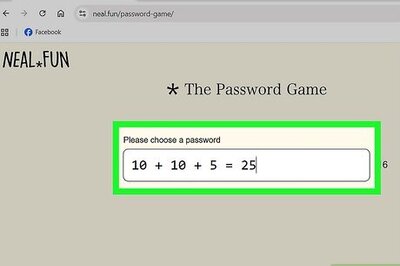
views
What does collate mean when printing?
Collating prints documents in a specified order or sequence. Collating is often used when printing multiple documents to ensure a single document has finished printing before the next one starts. It allows you to print in sequential order so you don’t have to reorganize the papers later. For example, if you’re printing 3 copies of a 10 page document, collating would ensure that all 10 pages of the document print in order. Without collating, the first page would print 3 times, then the second page would print 3 times, and so on.
Benefits of Collating Documents
Collated printing saves time. When collating, you don’t have to spend time sorting through the papers manually. This improves workflow and allows you to dedicate your time to more important tasks. Collating is especially convenient when you have to print several copies of large documents.
It improves accuracy. If you have to sort through all the pages on your own, there’s a chance pages could be misplaced or forgotten altogether. Collating helps ensure that each copy has every page of the document in the correct order.
When to Collate Documents
Printing important documents If you’re printing multiple copies of documents for work or school, it’s important to know each page is in the right order. To save time and effort, collate when printing documents like print reports, presentations, manuals and guides, and invoices and billing documents.
When you plan to bind the pages If you’re already dedicating time to binding several copies together, you likely don’t want to spend even more time making sure your documents are in the correct order. Whether you’re binding manually or using a binding machine, collating your documents can help speed up the process.
If the printer’s ink or toner is running low If there’s a chance your printer could run out of ink, it’s better to collate so you’ll at least have some documents completed. If your pages are uncollated and the printer runs out, you won’t have any completed documents, as the later pages will still need to print.
How to Collate When Printing
Turn on the “collate” option in the printer menu. Usually, collating is the default option, but depending on your printer’s settings, it may or may not be toggled on when you first click “Print.” Each printer menu is different, so examine yours carefully to find the “collate” button. If it isn’t already on, click the box next to it to turn it on. Then, print your document like usual. If you have trouble locating the “collate” button, check your printer’s manual for more assistance. If you don’t want to collate your documents, simply uncheck the “collate” button. This uncollated option is sometimes referred to as “grouping.” Note that if you’re only printing one copy of a document, the collate option will not be available. If you’re printing documents on different types of paper, you’ll likely need to organize them by hand rather than collating on your printer.




















Comments
0 comment